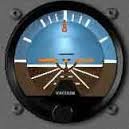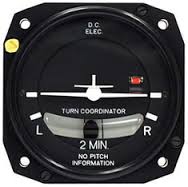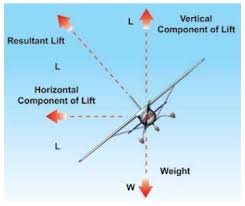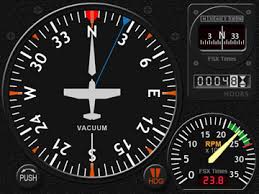The basics of flying a plane (3 - Instruments)
Hello Steemers!
Everyone needs to know how easy it is to fly! Today, a tutorial on the instruments you use in the cockpit of a small plane. Again, most of my experience is in a Cessna 172, so that is where my knowledge base lies. Now, inside the cockpit there looks to be 100+ doohickeys and gadgets, but they are all there to help you better navigate safely!

Here is a reference image we can use to get us started. Like I said, there are tons of other instruments in the cockpit, most of which you don't have to pay much attention to. We will go over the important ones that help pilots keep their orientation and bearings.
1) The Altimeter:

This tells you how far above the ground you are in feet. The standard Cessna only flies at about 1500 to 2000 feet because of size, but larger aircraft, like commercial jets, fly around 35,000 ft! Like a clock, one hand tells in thousands of feet and the other hand tells in hundreds. There are digital altimeters as well, but it is good to know how to read an analog.
2) The Air Speed Indicator:

There are two parts to this one. The speed of the plane with respect to the ground and the vertical air speed indicator. Both of them and the altimeter are run by the pitot static system (measures pressure). Although, it measures speed in knots, 1 knot is about 1.1 miles per hour. Cessna 172's have a take off speed of about 60-65 knots.
You have to set both the altimeter and the pressure given by the Ground/Tower Air Traffic Control.
3) Turn and Bank or Gyroscopic Instruments:
These help you keep level with the ground. One of the hard things about flying a plane is... well... think about this... A car travels in 2-dimensions, forward, back, right, and left; a plane travels in 3-dimensions forward, back, right, left, up, and down! It is harder to keep orientation. You don't want to end up up-side down!
.jpg)
.jpg)
These are two examples you may see in any plane. Cool thing is, they also tell you when to push your rudders (foot petals) right or left to help you keep height when turning! When you turn an airplane it tends to lose altitude because of a pressure difference in the wing. See below.
.jpg)
Since there is a loss in vertical lift, you instead will fall (very good to understand).
**4) The Compass:
We all know what this is! Haha! It tells us where we are going, North, South, East, or West.
.jpg)
To read this, you should know there are 360 degrees in a circle. So, the compass counts in threes, multiply by 10 to get your heading. North is 0 degrees. East is 90 degrees. South is 180 degrees. West is 270 degrees. Know how to read this! Yes, there are GPS's now, but what if your battery dies?
These are the really important pieces in a cockpit, but not the only ones! Else, there is the fuel indicator, corroborator heat/icing detector, fuel/air mixture, engine temperature, and more.
Here are some questions they might ask on the FAA Knowledge Test:
Questions:
- The pitot system provides impact pressure for which instrument?
- What does the red line on an airspeed indicator represent?
- What is the absolute altitude vs true altitude?
- If it is necessary to set the altimeter from 29.15 to 29.85, what change occurred?
Answers:
- Airspeed indicator.
- Never-exceed speed.
- Absolute altitude is height above the ground, but true altitude is height above sea level.
- A 700 foot increase in indicated altitude.
Congratulations Steemers! That's the end of my lesson for today! We are on our way to the conquest of greatness!
Bitcoin is down (for once in the last while), but online currency is still developing well!
Hope to hear your questions!

Awesome, I will follow the tutorial man. So far you doing great!
I appreciate it! Have fun!
Very cool!! Great post!
Thank you! Hope they get cooler. Haha